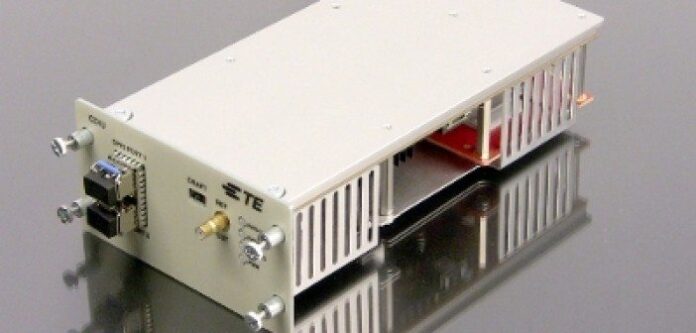Digital DAS is a way to cut costs by eliminating headend equipment
Many wireless deployments seek to minimize attenuation, or loss of signal strength, but for in-building systems operators actually invest in dedicated equipment to attenuate the signal from the macro network so it can be used indoors. This headend equipment can be costly, and the building space it occupies is often valuable real estate. Within the last few years, several vendors have developed distributed antenna system solutions that eliminate the headend equipment used for attenuation in order to save money, time and space.
TE Connectivity, which recently sold its DAS business to market leader CommScope, has developed a way to eliminate attenuation equipment by connecting its DAS equipment directly to Alcatel-Lucent base stations.
“We have a very close collaboration on various technology aspects with Alcatel-Lucent, and one of them is the CPRI interface where we got together and developed a way of connecting an Alcatel-Lucent baseband unit with our DAS system,” said Boris Golubovic, director of product management for TE Connectivity.
Common public radio interface is a protocol for connecting remote radio heads to baseband processing units. In theory, equipment that works with one manufacturer’s CPRI will work with another’s, but in practice this does not happen. Alcatel-Lucent, which is set to be acquired by competitor Nokia, has been more open with its CPRI interface than have most of its competitors.
TE Connectivity deploys its digital solution with a CPRI digital interface unit (pictured) and fiber connections. Systems have been deployed at New York’s Grand Hyatt Hotel, Mizzou Arena at the University of Missouri in Columbia, Mo., Paul Brown Stadium in Cincinnati, and Martin Stadium in Pullman, Wash.
Cobham, which recently completed its integration of DAS vendor Axell Wireless, also has a digital DAS solution that can eliminate headend equipment. The Cobham idDAS solution relies on a CPRI router.
“We’ll take the RF signal, we’ll digitize it, [and] now it’s a packet,” said Matthew Thompson, Cobham’s VP of DAS sales. “It goes to the CPRI router, and from there I can send it to any remote I want to in the system.” The Cobham solution can use fiber or Ethernet cable for connectivity.
Thompson said that since the CPRI interface is built into the router, Cobham’s solution will be able to work with the CPRI interface of any manufacturer that chooses to share its interface. The first deployment is set to go live in Germany in December.
ABI Research described Cobham’s solution as “one of the most significant DAS evolutions in a decade,” when it named Cobham’s Axell Wireless the most innovative DAS company last year.
Dali Wireless is the only company formed specifically to create digital DAS solutions. Dali was founded in 2006 in Silicon Valley to digitize distributed antenna systems. The company calls its solution an RF router.
“You can think of our platform a lot like Cisco’s IP router,” said Shawn Stapleton, co-founder and CTO of Dali Wireless. “We take in RF signals from the base station, or we can take in digital signals from the base station, and we can even take in IP data as well. Then we pass this through our … RF router and we packetize all that information and provide it with a given header, so an address, just like a traditional Cisco router and then we send that out over our network. … We then route these packets to the various remote units.”
Dali Wireless recently announced a contract to design and build an all-digital public safety DAS covering all five terminals at DFW Airport.
Follow me on Twitter.

